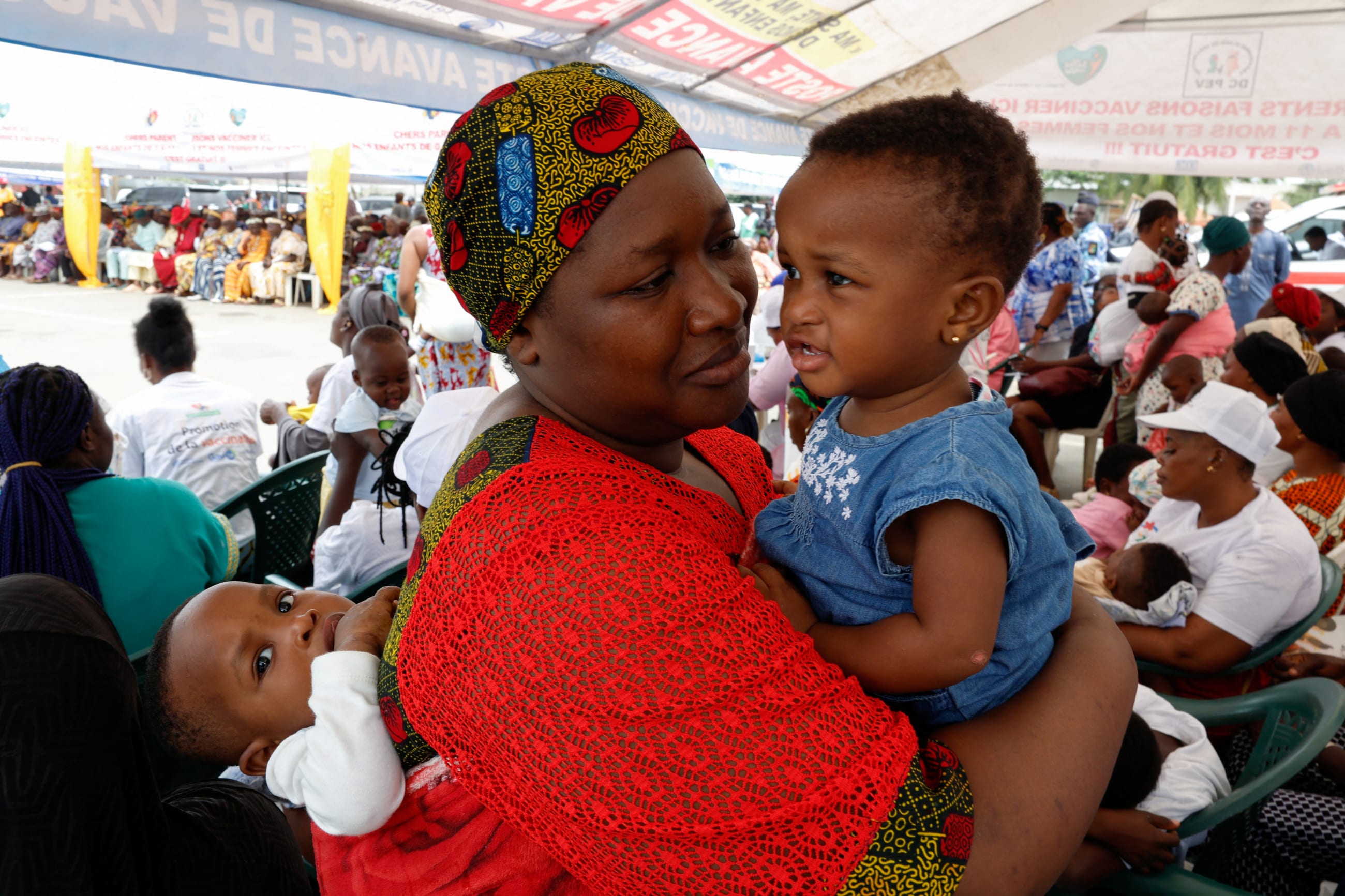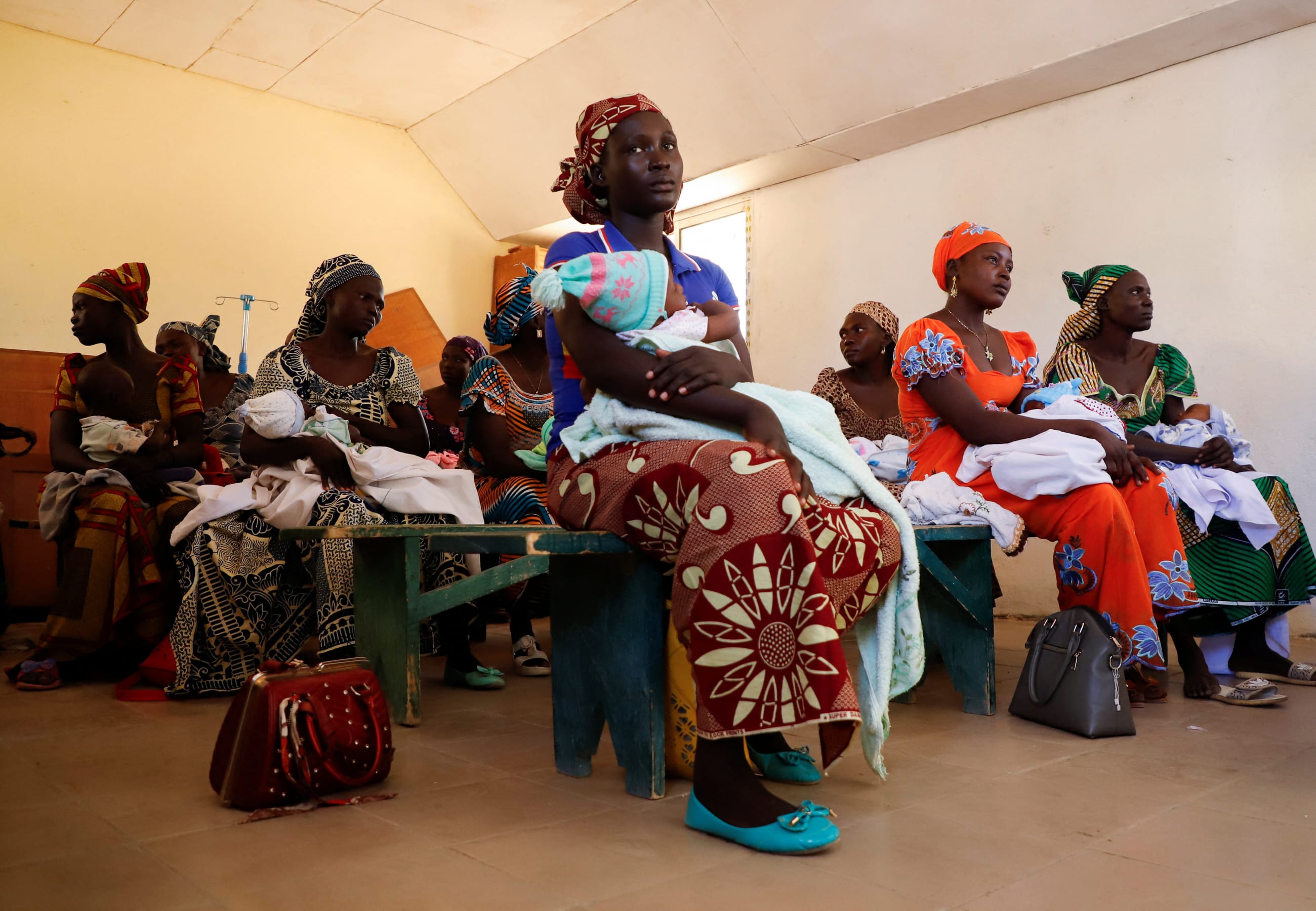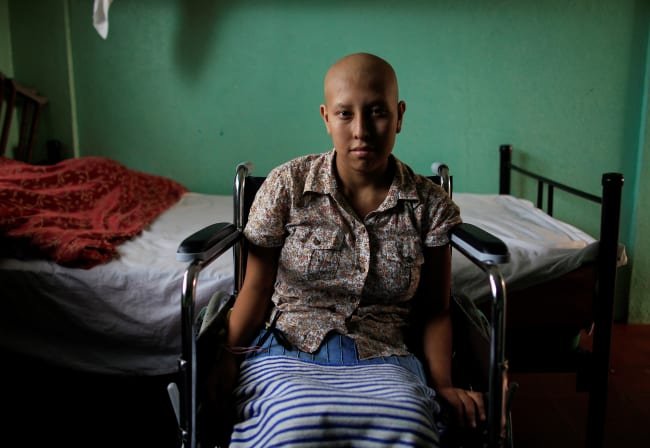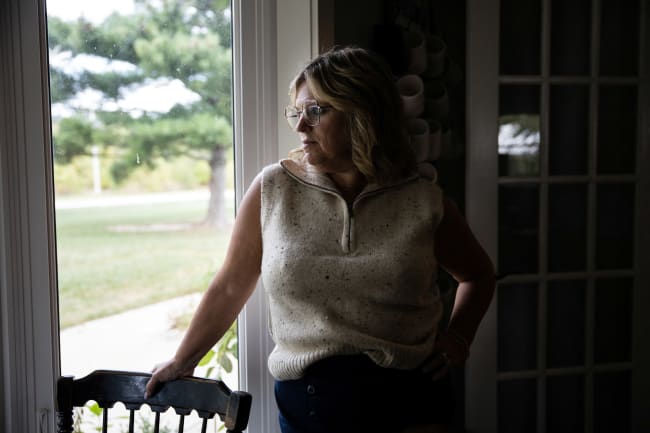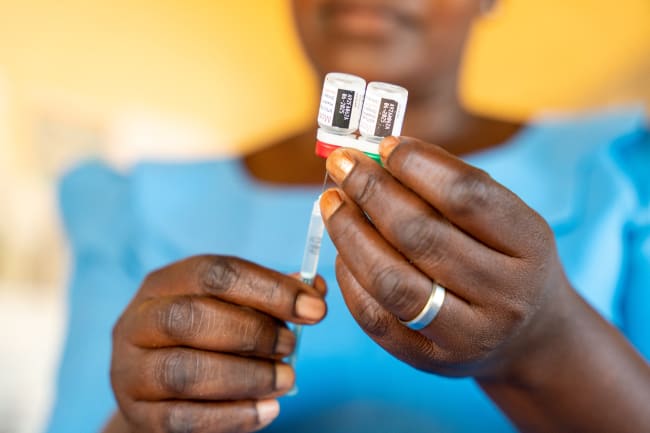Malaria claims nearly 600,000 lives per year worldwide—and children under 5 years old account for almost three-quarters of those deaths. Yet providing convenient, child-friendly treatment has remained a challenge, particularly for infants.
Pediatric formulations of sweet-tasting dispersible tablets can ease the administration of medications and help ensure that children complete a full course of life-saving treatment. In July, Coartem Baby made headlines after regulators in Switzerland approved it as the first malaria drug for newborns and infants. Made by Novartis and the Swiss nonprofit Medicines for Malaria Ventures (MMV), Coartem Baby has less toxicity and offers better safety than current antimalarial tablets, which are intended for older children weighing more than 5 kilograms but were also used for smaller babies. Coartem Baby offers greater precision for treating the youngest children, avoiding the potential for overdose, a development that helps close a treatment gap that has put infants at risk.
Earlier, in 2009, Novartis and MMV launched Coartem Dispersible, a cherry-flavored artemisinin-based combination therapy antimalarial tablet that dissolves in water and was intended for children over 5 kilograms. More than 500 million of these dispersible tablets have since been distributed worldwide, driven by a combination of affordable pricing, predictable funding, and adequate manufacturing capacity that includes a network of generic companies, health worker training, and strong distribution partnerships, especially in underserved regions.
Novartis plans to launch Coartem Baby on a not-for-profit basis later this year, and industry watchers expect eight African countries—Burkina Faso, Ivory Coast, Kenya, Malawi, Mozambique, Nigeria, Tanzania, and Uganda—to approve the drug quickly, thanks to a partnership with Switzerland's drug regulator, Swissmedic.
Yet, although Coartem Baby merits celebration, its benefits will depend on its integration with other malaria tools and the strength of the health systems where the drug is deployed. Overcoming these hurdles could prove challenging as global health funding and coordination stand at a crossroads.
Driving Innovation in Malaria Drug Development
Sustaining innovation in drug development remains critical for malaria. Not only do neglected populations demand novel pediatric options, such as Coartem Baby, but entirely new treatments must also be produced to counter the growing threat of drug resistance to artemisinin—the key active pharmaceutical ingredient in current first-line medications for malaria.
Artemisinin attacks and clears malaria-causing Plasmodium parasites from the bloodstream of patients, but its efficacy has been increasingly thwarted by the evolution of partially resistant parasites in Southeast Asia and Africa. This mounting resistance could render all artemisinin treatments ineffective for children and adults. Some estimates project that more than 1 in 10 malaria cases in Africa could exhibit partial artemisinin resistance by 2040.
Pharmaceutical companies, however, do not—in the absence of financial incentives—have a reputation for developing novel drugs. A profit-driven business model often does not work for treating diseases such as malaria—which have large but not well-paying markets given their burden in low- and middle-income countries. Incentivizing innovation will require maintaining partnerships, such as those between Novartis and MMV, under which public stakeholders and philanthropies can pool funds to partially cover costs of drug development for pharmaceutical companies. Such cooperation can facilitate other aspects for ensuring treatment uptake, such as the purchasing and procurement of a drug, in-country licensing, and pilot studies.
However, national governments have recently cut their development assistance budgets and major global health donors such as the Global Fund portend new challenges to the mobilization of successful partnerships.
Integrating Malaria Drugs With Other Control Tools
Country-level malaria programs are witnessing the advent of several effective tools against malaria, such as vaccines and preventive therapies. Many programs have initiated efforts to integrate these remedies into control strategies and treatment guidelines. With the arrival of new pediatric medicines, malaria programs will need to ensure that all these tools complement each other.
In 2021, malaria elimination experienced a breakthrough when RTS,S/AS01 (Mosquirix) became the first malaria vaccine approved by the World Health Organization (WHO) for broad use in African children older than five months. Two years later, R21/Matrix-M became the second approved vaccine option. Countries began rolling out these malaria vaccinations, including Democratic Republic of Congo, Ghana, Kenya, and Malawi.
Health clinics administer the RTS,S or R21 to children between 6 and 24 months old, but these vaccines reduce the chances of catching malaria by only 40%. This level of vaccine efficacy can save lives, but breakthrough infections will occur. Coartem Baby can address those incidents, but multicourse treatment relies on effective public health communication because parents can mistakenly assume that receiving a vaccine will prevent breakthrough infections.
A second key is seasonal malaria chemoprevention (SMC), which involves giving young children courses of antimalarial medicine during the rainy season, when infections reach their peak. This strategy retains drug levels in a child's blood, providing protection against malaria during high-risk periods. In partnership with the pharmaceutical company Fosun Pharma, MMV developed a child-dispersible version of SMC. Here, as with vaccinations, communication with parents matters greatly in preventing the counterproductive assumption that SMC will mitigate malaria risk entirely in children. SMC works best and has demonstrated superior efficacy in conjunction with vaccination.
These examples illustrate how awareness of Coartem Baby should be framed as valuable until a broader, comprehensive toolkit is available, at which point health providers will have received clear guidelines on the drug's appropriate use and governments can incorporate the remedy into national treatment protocols.
Challenges to Delivery and Distribution
New therapies and novel synergies with existing interventions require better access for hard-to-reach communities. Facilitating this access will depend not just on bypassing complex procurement and supply chain webs, but also on extending supply chains into areas where people struggle to access malaria care.
Scaling coverage requires strategies that not only integrate multiple tools into clinics, but also incorporate private pharmacies, drug shops, and community health workers into the overall process for malaria treatment and prevention. Doing so has been demonstrated to be cost effective but can also be a resource-intensive undertaking.
Sustaining malaria control and advancing elimination now also requires navigating an increasingly precarious funding landscape. From 2003 to 2023, the U.S. President's Malaria Initiative disbursed $15.6 billion for malaria control efforts and supported the introduction of a range of malaria interventions including large-scale treatment programs such as Artemether Lumefantrine/Coartem. The dissolution of the U.S. Agency for International Development (USAID) and the international reorganization of foreign assistance has put that funding in jeopardy. Other larger funders of malaria treatment, such as the Global Fund and EU bilateral, also face increasing uncertainty in their future funding. The gap between what the WHO estimates is needed for anti-malaria efforts and funds available was already more than $4.3 billion in 2023.
For countries most affected by malaria, domestic funding can gradually replace declining donor commitments. However, the abrupt withdrawal of such support risks causing stockouts, disrupting distribution systems, and weakening community health programs. The success of Coartem Baby, akin to other malaria tools and medicines targeted toward low- and middle-income countries, will be tied to whether malaria endemic regions and global health actors will find a way to achieve adequate health financing, reliable data collection to monitor the need for treatment, efficient supply chains, and well-trained health workers.
